Alteration of calcium homeostasis in primary preeclamptic syncytiotrophoblasts: effect on calcium exchange in placenta
- PMID: 20178461
- PMCID: PMC3922387
- DOI: 10.1111/j.1582-4934.2010.01039.x
Alteration of calcium homeostasis in primary preeclamptic syncytiotrophoblasts: effect on calcium exchange in placenta
Abstract
Preeclampsia (PE) is characterized by maternal hypertension, proteinuria, oedema and, in 30% of cases, by intrauterine growth retardation. Causes are still unknown; however, epidemiological and clinical studies have suggested alterations in maternal calcium metabolism. We suggested that in PE, calcium transport by the syncytiotrophoblast (ST) is disturbed. From total placental tissues, we studied the expression of: calcium channels (TRPV5, TRPV6 [transient receptor potential vanilloid]), calcium binding proteins (CaBP-9K, CaBP-28K), plasma membrane calcium ATPase (PMCA)1,2,3,4 pumps, ATP synthase, genes implicated in Ca(2+) release [inositol-1,4,5-triphosphate receptor (IP3R)1,2,3; Ryanodine receptor (RyR)1,2,3] and replenishment (SERCA1,2,3 [sarcoendoplasmic reticulum Ca(2+) ATPases]) from endoplasmic reticulum, channels implicated in mitochondrial Ca(2+) accumulation (VDAC1,2,3 [voltage-dependent anion channels]) and a marker of oxidative stress (hOGG1 [Human 8-oxoguanine-DNA glycosylase 1]), as well as the influence of these variations on calcium transport in primary ST cultures. The mRNA and protein levels were thereby examined by real-time PCR and Western blot analysis, respectively, in two different groups of pregnant women with similar gestational age: a normal group (n= 16) and a PE group (n= 8), diagnosed by a clinician. Our study showed a significant decrease in calcium transport by the ST cultured from preeclamptic placentas. We found a significant (P < 0.05) decrease in mRNA levels of TRPV5, TRPV6, CaBP-9K, CaBP-28K, PMCA1, PMCA4, ATP synthase, IP3R1, IP3R2, RyR1, RyR2 and RyR3 in PE group compared to normal one. We also noted a significant decrease in protein levels of TRPV5, TRPV6, CaBP-9K, CaBP-28K and PMCA1/4 in PE group. In contrast, SERCA1, SERCA2, SERCA3, VDAC3 and hOGG1 mRNA expressions were significantly increased in PE placentas. Calcium homeostasis and transport through placenta is compromised in preeclamptic pregnancies and it appears to be affected by a lack of ATP and an excess of oxidative stress.
© 2011 The Authors Journal of Cellular and Molecular Medicine © 2011 Foundation for Cellular and Molecular Medicine/Blackwell Publishing Ltd.
Figures
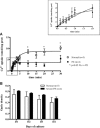
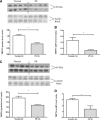

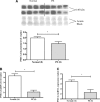

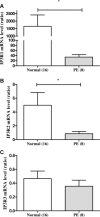
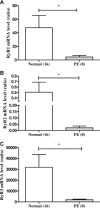
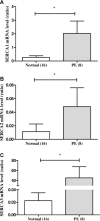
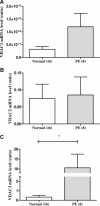

References
-
- Sibai B, Dekker G, Kupferminc M. Pre-eclampsia. Lancet. 2005;365:785–99. - PubMed
-
- Walker JJ. Pre-eclampsia. Lancet. 2000;356:1260–5. - PubMed
-
- Huppertz B. Placental origins of preeclampsia: challenging the current hypothesis. Hypertension. 2008;51:970–5. - PubMed
-
- Redman CW, Sargent IL. Placental stress and pre-eclampsia: a revised view. Placenta. 2009;30:S38–42. - PubMed
-
- Robinson NJ, Wareing M, Hudson NK, et al. Oxygen and the liberation of placental factors responsible for vascular compromise. Lab Invest. 2008;88:293–305. - PubMed
Publication types
MeSH terms
Substances
Grants and funding
LinkOut - more resources
Full Text Sources
Research Materials
Miscellaneous

